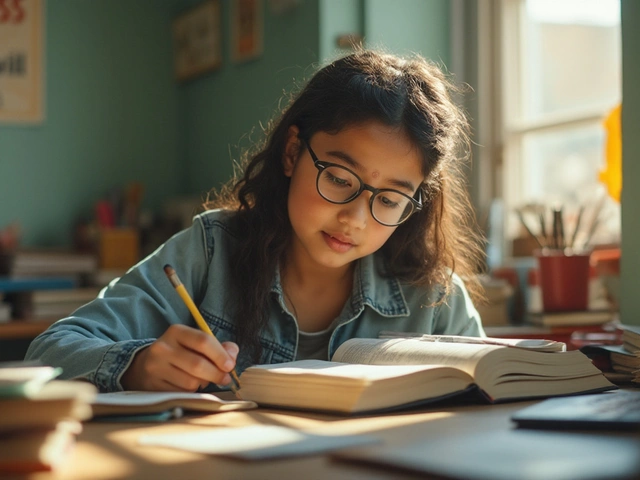Becoming a teacher fast isn’t just a dream—it’s totally possible with the right program. If you already have a college degree but want to switch to teaching as soon as you can, you’re not alone. Lots of people want to know, “How fast can I actually be in a classroom?”
Here’s the lowdown: some teacher training programs shave the process down to as little as six months from start to classroom, especially if you’re flexible about where and what you want to teach. Of course, there’s stuff you can’t skip, like background checks, state exams, and some student teaching. But the speed factor mostly comes down to the type of certification program you pick and your own hustle.
You’re going to see a bunch of terms thrown around—like “alternative certification” or “fast-track teacher prep.” Not every state works the same, and no two programs will look exactly alike. But don’t stress! Whether you want to teach elementary, high school, or even special education, there’s probably a route that fits your timeline, budget, and lifestyle.
- Why People Look for Fast-Track Teacher Programs
- Breaking Down Alternative Teacher Certification
- Comparing the Fastest Routes: Online, In-Person, and Hybrids
- What to Expect: Steps and Timeframes
- Tips for Succeeding in Accelerated Programs
- Things You Should Know Before Choosing a Program
Why People Look for Fast-Track Teacher Programs
Lots of people want a quicker way to switch careers, especially if they already have a college degree but don’t want to spend years in school again. Fast-track teacher certification programs are a lifeline for folks who need a career change, recent grads aiming to work right away, or even military veterans moving into civilian life. The idea is to skip the extra classes you don’t need and focus on classroom skills as fast as possible.
A huge push for fastest teacher training came after schools started facing real teacher shortages. According to the National Center for Education Statistics, over 40% of schools in the United States reported trouble with hiring teachers in 2024. That gap means states are hungry for new teachers, and they’re setting up pathways so you can get certified with less red tape.
For a lot of adults, time is money. Traditional teacher prep can take two years or more, while alternative teacher licensure programs can get you working in half that time or even less. Some programs, like Texas Teachers or Teach for America, let you start teaching with a temporary certificate after a few months of training. You earn full certification as you work in the classroom.
“We know people are looking for practical ways to retrain and fill classrooms quickly, so fast-track certification is our top priority,” says Dr. Amber Goodwin, a director at the National Center for Alternative Certification.
Fast-track programs are also popular with people who want to make a difference ASAP. If you want to help your community, it feels better to get into a classroom in months instead of years. Plus, with urgent needs in subjects like math, science, and special education, some schools even offer signing bonuses or tuition help just to attract candidates who finish these teacher training programs fast.
Breaking Down Alternative Teacher Certification
Let’s get real—most people who choose an alternative teacher certification program already have a bachelor’s degree. These programs are the answer if you’re trying to switch careers or if you skipped education courses in college. You do not need a teaching degree to start.
So how do these fastest teacher training and alternative teacher licensure options work? Instead of backtracking to grab another four-year degree, you pick a program (sometimes run by a university, sometimes by an independent group) that’s recognized by your state. The point is to get you teaching quickly, with some training and support on the side.
Here’s the usual route for alternative teacher certification programs:
- Complete a short period of classroom-focused coursework (mostly online, some in-person or hybrid).
- Pass required state exams—usually a basic skills test and an exam in your subject area.
- Work as a paid teacher (yep, while still training) under a provisional or temporary certificate.
- Wrap up a year or two of supervised teaching, often called an internship or residency.
- Earn your standard teaching certificate once you meet the program and state requirements.
The fastest teacher training programs take as little as six months to get you into the classroom. But keep this in mind—most states expect you to keep working through the full certification process during your first year on the job.
Some of the most popular fast-track and online teacher certification programs in the U.S. include:
- Teach for America (TFA)
- TNTP Teaching Fellows
- ABCTE (American Board for Certification of Teacher Excellence)
- Teach-Now (now part of Moreland University)
- State-run alternative licensure programs
Check if your state has its own version—some places like Texas, Florida, and Arizona are well known for their streamlined teacher prep options. For a quick peek, here’s what you might expect program-wise in a few states:
| State | Typical Program Length | Program Highlights |
|---|---|---|
| Texas | 6-9 months | Online/in-person mix; paid internship year |
| Florida | 6-12 months | Online heavy, short pre-service training |
| Arizona | 6 months | Provisional license; teach while finishing training |
If you want to jump into teaching sooner, this route makes it possible, as long as you handle some coursework while already on the job. The trick is picking a teacher certification program that’s accepted in your state and fits your schedule. Always double-check your state board’s latest rules—policies can and do change all the time.
Comparing the Fastest Routes: Online, In-Person, and Hybrids
If you want a fastest teacher training experience, picking the right program format makes a huge difference. Let's break down what to expect from online teacher certification, old-school in-person programs, and hybrids that mix both.
Online programs are often the quickest. They let you move at your own pace, sometimes finishing coursework in just 3-6 months if you hustle. Leading options like Teach-Now, iteach, and Teachers of Tomorrow are available in lots of states. You can watch lectures whenever and knock out assignments evenings or weekends. That's super helpful for anyone working another job. But keep in mind: even online, you’ll almost always have to spend some time student-teaching in a real classroom—usually around 12-16 weeks.
In-person programs still exist, usually run by universities or school districts. These tend to run in a set schedule (think: September to May, or summer bootcamps). They’re great if you thrive on face-to-face support, but they're slower—typically, you’re looking at at least 9 months, sometimes a full year, before you start teaching solo. Some folks love the community vibe, though, and get better at classroom management from more time with mentor teachers.
Hybrid programs split the difference. You’ll attend some classes in person (often evenings or certain weekends) and do the rest online. These are getting popular because they cut down the rigid schedule, but still give you some hands-on training and a support network. Timing is often pretty flexible—many finish within 6-9 months. Urban Teachers and TNTP Teaching Fellows use this kind of setup in lots of bigger cities.
Check out how the timeframes really stack up:
| Program Type | Typical Completion Time | Flexibility |
|---|---|---|
| Online | 3-6 months | High (work at your own pace) |
| In-Person | 9-12 months | Low to Medium (fixed schedule) |
| Hybrid | 6-9 months | Medium to High |
Your choice really comes down to how you learn best, how much support you want, and how quickly you want that full teaching license in your hand. If the finish line is your top priority, online teacher certification usually wins. But if you want more coaching, or your state doesn’t accept fast online programs, you might need to look at hybrid or in-person routes. Double-check what your state needs, and don’t just pick the fastest—make sure it’s actually recognized in your area!

What to Expect: Steps and Timeframes
If you’re looking for the fastest teacher training options, the game plan is pretty simple but does take some serious hustle. Most alternative teacher certification programs are designed for people with a bachelor’s degree who want to get certified ASAP without going back for another four years. Some programs can get you out teaching in as little as six months, but usually, expect 9 to 18 months from start to finish. Here’s a breakdown of how it usually goes:
- Apply and Get Admitted: Most fast-track programs have online applications. You'll need your college transcripts and a background check. Some states require passing a basic skills or subject area test right at the start.
- Complete Training Coursework: These are all about the essentials. Think classroom management, lesson planning, and how to teach math or reading. With online teacher certification programs, you’ll often move at your own pace, which makes everything quicker—sometimes just a couple of months for coursework.
- Pass State Exams: You can’t skip the tests. Most states use something like the Praxis or a state-specific exam to make sure you know your subject and basic teaching skills. Prep time depends, but many people overlap it with their coursework.
- Student Teaching or Residency: This is like a fast-forward version of student teaching. Some programs drop you in the classroom right away as a “teacher of record” with a mentor, while others do a short residency of a few weeks or months. You learn fast—on the job.
- Get Your Provisional License: Most fast-track options give you a provisional or temporary license after the core steps. This lets you start teaching full-time while you finish anything else your state asks for, like more classes or a portfolio.
- Upgrade to Full Certification: Finish up any extra credits or requirements set by the state, like a year of mentor supervision or continuing education courses. Then, you turn that temp license into a full one.
Worried about the actual timeframes? Here’s a quick look at what you might see:
| Step | Typical Time Needed |
|---|---|
| Application & Admission | 2-8 weeks |
| Training Coursework | 2-6 months (online tends to be fastest) |
| State Testing | 1-3 months (can often overlap) |
| Student Teaching/Residency | 1-4 months (sometimes starts Day 1) |
| Provisional License | Immediate after requirements |
| Full Certification | Usually after 1 year teaching |
Keep in mind, becoming a teacher quickly also means juggling things at warp speed. Fast-track programs aren't for everyone, but if you’re ready, you’ll be running your own classroom way sooner than you think. Just make sure to double check with your state—requirements change and some states love to keep things interesting!
Tips for Succeeding in Accelerated Programs
Signing up for a fastest teacher training track sounds awesome, but let’s be real—these programs are tough and move at lightning speed! To actually finish, get certified, and step into the classroom, you need more than just motivation. Here’s how to make it work for you:
- Stay organized from day one. Most people who struggle in alternative teacher licensure programs just lose track of deadlines and assignments. Use a planner, calendar app, or even sticky notes everywhere—whatever keeps your tasks and classes on point.
- Lean on your cohort. Fast-track programs usually put you and a bunch of others on similar timelines. Build a support network. Swap notes, vent about stress, and share classroom tips. You don’t have to do it alone.
- Ask for help the minute you need it. In these programs, waiting even a week can set you back for months. If you struggle with assignments, concepts, or classroom management tricks, ask instructors or mentors right away.
- Pace yourself with self-care. Burnout is real in any teacher certification program, but it’s even tougher on the fast track. Eat well, get sleep, and take breaks, even if that means a quick walk around the block or zoning out with music.
- Get classroom experience early. Some fast programs let you start teaching or assisting before you’re totally certified. Jump on these real-life chances. Actual experience makes the theory click way faster.
- Prioritize state exams and paperwork. Whether it’s the Praxis or another state test, schedule them as soon as you’re eligible. Dragging your feet can hold everything up—even if you finish your courses lightning-fast.
Here’s a snapshot of what the typical weekly time commitment looks like for the most popular teacher training options:
| Program Type | Average Weekly Hours | Hands-On Experience? |
|---|---|---|
| Online Fast-Track | 25-35 | Usually limited, may require in-person placement |
| In-Person Alternative Certification | 35-45 | Regular classroom time each week |
| Hybrid (Online & In-Person) | 30-40 | Mix of virtual and physical classrooms |
Bottom line? You can knock out a teacher certification program quickly, but plan your moves, don’t be shy about asking for help, and make sure you’re actually getting hands-on time. Fast doesn’t mean easy—but if you prep smart, the finish line comes up faster than you’d think.
Things You Should Know Before Choosing a Program
Not all fastest teacher training programs are made the same. Before you dive in, it pays to check a few key facts to make sure you’re picking a program that matches your life and your goals. Nothing’s worse than realizing halfway through you missed something important!
- State Approval Matters: Make sure the program is accepted by your state’s Department of Education. Some online and alternative certification programs don’t cover every state. This might sound like a pain, but states can be picky about which teacher certification program they accept.
- Check the Requirements: Speed isn’t everything. Some programs want you to have a certain GPA or specific coursework done. Others require a bachelor’s in a related subject, while a few are open to any major if you pass a subject exam.
- Costs Add Up: Fast-track and online programs can be less expensive than traditional routes, but some tack on extra fees for licensing, test prep, or student teaching placements. Double check the total cost before you commit so you don’t get blindsided by those sneaky extras.
- Student Teaching Placement: For most teacher training options, you need to nail a practical classroom placement. Some programs find these for you, but others leave it up to you to secure. That can get stressful if you’re short on time or live in a rural area.
- Flexibility vs. Support: Online and hybrid programs are flexible, but how much help do you actually get? Ask if they offer real-life teacher mentors, career services, or live support for state tests. Those little things can get you through the tough spots.
- Job Prospects After Graduation: Some fast-track programs partner with school districts and have higher hire rates, especially for special education, science, or math roles. It’s worth asking where their grads end up working.
Just to give you a quick idea of how different program timelines can be, look at this:
| Program Type | Average Length | Typical Cost (USD) |
|---|---|---|
| Alternative Certification (Online) | 6-12 months | $4,000 - $7,000 |
| University Certificate | 1-2 years | $8,000 - $20,000 |
| Residency Program | 1 year | $10,000 - $15,000 |
Your best bet? Read the fine print, talk to someone who finished the program, and see if the network matches your career goals. The right alternative teacher licensure or fast-track program can get you into a classroom quickly, but picking the wrong one can mean extra months or even years stuck in limbo.





